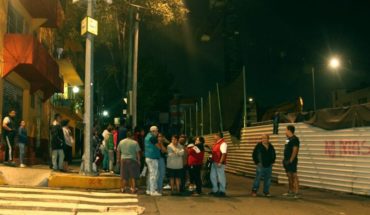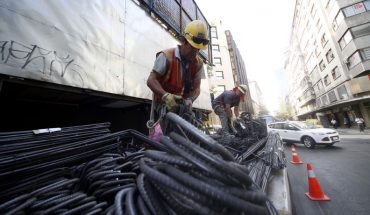OAKLAND, California, USA (AP) — A federal judge in California on Monday reinstated at the national level the interruption of a plan by President Donald Trump’s administration that would prevent most migrants from claiming asylum on the U.S.-U.S. border District Judge Jon Tigar determined in Oakland that a court order halting the entry into force of the government’s immigration policy must be enforced throughout the country.
Tigar blocked the measure in July after a lawsuit filed by groups providing assistance to asylum seekers. But the Federal Court of Appeals for the Ninth Circuit limited the impact of Tigar’s order to states within the area covered by the appeals court. HELP US Click the Google News star and follow usBased on that, the measure was blocked in the border states of California and Arizona, but not in New Mexico or Texas.In his ruling, Tigar underlined a “need to maintain a uniform immigration policy” and he noted that nonprofits such as “On the Other Side” are unaware of where asylum-seeking migrants will end up living once they enter the United States and present their arguments for staying in the country.” The court acknowledged that there is a serious danger to those seeking asylum across the southern border,” Lee Gelernt, a lawyer with the American Civil Liberties Union (ACLU), said in a statement. Trump expressed his disagreement with the judge’s ruling.” I think it’s very unfair that he does that,” the immigration estates reporters told reporters as he left the White House for North Carolina. “I don’t think he should afford it.” White House secretary Stephanie Grisham said in a statement that a single judge should not have the ability to exert such a broad impact on immigration policies, noting that the government’s request to the Supreme Court to oversee that court order still resolution is pending.” The ruling is a gift to smugglers and people smugglers and undermines the rule of law,” he said. Courts have blocked some crucial changes from the Trump administration to immigration laws, including a previous version of a ban on granting asylum. The president has prevailed on several fronts after receiving initial legal setbacks, for example when the Supreme Court recently suspended an order preventing the use of Pentagon money to build walls on the Mexican border.The rules that issued by the federal government in July they are valid for most migrants crossing another country before arriving in the United States. They focus on tens of thousands of Central Americans who travel through Mexico each month to apply for asylum, and would also affect asylum seekers from Africa, Asia and South America who often arrive in the country. The change reverses decades of U.S. policies in what Trump administration officials say was an attempt to close the gap between the initial asylum-seeking review, in which most people receive approval from the authorities, and the final decision on whether asylum is granted, which most people do not get. U.S. law allows refugees to apply for asylum when they arrive in the United States no matter how they arrive or cross. The crucial exception is for those who have arrived through a country considered “safe,” but the law is vague on how a country is determined to be safe. He says that in agreement with a bilateral or multilateral agreement. In general, people may aspire to asylum in the United States if they are afraid to return to their home country because they would face persecution based on their race, religion, nationality, or membership in a particular social group. The Border Patrol apprehended about 50,000 people on the southern border in August, a 30% decrease in arrests compared to July, amid intense summer heat and aggressive measures in both the United States and Mexico to discourage the flow of migrants.





